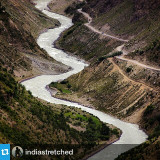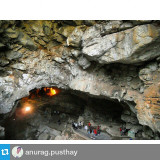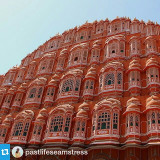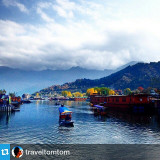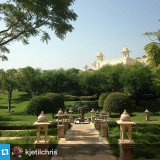Random image from our India photo collection
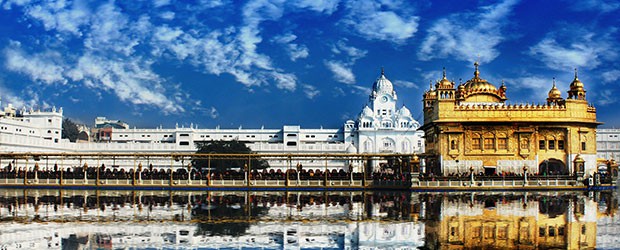
Kerala Tourist Centers
Cochin
Fort Cochin, with its European heritage and stubborn self-absorption is a place of history, where a friendly phantom, still stalks the lonely streets.
The Europeans have left random imprints in Fort Cochin. The massive ramparts, which are so conspicuous a feature of the place, were put up by the British to protect the houses that had been shaken by the force of an explosion that blew up the cathedral of Santa Cruz.
In fact, they themselves had bombarded the church fearing a possible restoration of Dutch supremacy in Cochin. In spite of it all, the Santa Cruz Basilica still stands in a spirit of sturdy resistance.
The chief landmark though is St. Francis’ Church, built in the early 16th century. It is the pride of Fort Cochin. The most magnificent spectacle here was the burial of Vasco da Gama in 1526. Nevertheless, it was to be a temporary resting place for this “armed intruder,” as after sixteen years later, his son Pedro da Silva Gama took away the mortal remains of his father back to Portugal.
St. Francis’ Church is the oldest existing European church in India. From this choir, for the first time in India, resounded the resonant chants of Rome. The church began life as a wooden structure built by the five friars who accompanied, the Portuguese to Cochin, in 1503. The Franciscans, followers of St. Francis Xavier who visited Cochin in the early 16th century, raised the present edifice.
The most enduring impression of Fort Cochin is the mystery of the Chinese fishing nets. Like totems from another age stranded in time, they perch along the backwaters. The Chinese fishing nets are the most efficient means of backwater fishing and Fort Cochin is full of them.
The Dutch palace at Mattancherry was actually built by the Portuguese and presented to the Cochin ruler Vira Kerala Varma in 1555 as an act of penance for the plunder and desecration of a temple near the Raja’s palace by a hot-headed young Portuguese officer.
The extensions of the east and south and the wooden ceilings of the Coronation Hall were incorporated by the Dutch and hence the name. The real glory of the palace however lies in its wall paintings, all done using the tempera process of painting.
Forty-five scenes from the Ramayana adorn the long walls of the bedchamber. They are known for their brilliant execution. Of the paintings elsewhere in the palace, one is a large unfinished portrait of Lord Vishnu.
Mattancherry has a predominantly Muslim population. But tucked away behind its turmoil is Jew Town, a quiet blind alley. A single street of old discolored buildings where the few surviving members of the oldest Jewish settlement in India live. Chased out of Muziris by the Portuguese, they came to Cochin in the 16th century and found an unexpected benefactor in the Raja of Cochin who allotted them this land near his palace and helped them build their place of worship.
The Paradeshi Synagogue was built in 1568 with timber supplied gratuitously by the Raja who is said to have personally instructed the masons to mix mortar with coconut water for strong walls. Being one of the oldest synagogues in the world, it is a jewel of incomparable beauty with its brass columns, Belgian hanging lamps, and exquisite hand-painted, blue-and-white Chinese porcelain tiles of which no two are alike.
The Parishath Thampuram Museum in Ernakulam has a large collection of 19th-century oil paintings, old coins, sculptures, Mughal paintings, and temple models.
Vypeen and Gundu islands, boast of a lighthouse at Ochanthuruth, good beaches, and the 16th-century Pallipuram Fort.
Go back
The Europeans have left random imprints in Fort Cochin. The massive ramparts, which are so conspicuous a feature of the place, were put up by the British to protect the houses that had been shaken by the force of an explosion that blew up the cathedral of Santa Cruz.
In fact, they themselves had bombarded the church fearing a possible restoration of Dutch supremacy in Cochin. In spite of it all, the Santa Cruz Basilica still stands in a spirit of sturdy resistance.
The chief landmark though is St. Francis’ Church, built in the early 16th century. It is the pride of Fort Cochin. The most magnificent spectacle here was the burial of Vasco da Gama in 1526. Nevertheless, it was to be a temporary resting place for this “armed intruder,” as after sixteen years later, his son Pedro da Silva Gama took away the mortal remains of his father back to Portugal.
St. Francis’ Church is the oldest existing European church in India. From this choir, for the first time in India, resounded the resonant chants of Rome. The church began life as a wooden structure built by the five friars who accompanied, the Portuguese to Cochin, in 1503. The Franciscans, followers of St. Francis Xavier who visited Cochin in the early 16th century, raised the present edifice.
The most enduring impression of Fort Cochin is the mystery of the Chinese fishing nets. Like totems from another age stranded in time, they perch along the backwaters. The Chinese fishing nets are the most efficient means of backwater fishing and Fort Cochin is full of them.
The Dutch palace at Mattancherry was actually built by the Portuguese and presented to the Cochin ruler Vira Kerala Varma in 1555 as an act of penance for the plunder and desecration of a temple near the Raja’s palace by a hot-headed young Portuguese officer.
The extensions of the east and south and the wooden ceilings of the Coronation Hall were incorporated by the Dutch and hence the name. The real glory of the palace however lies in its wall paintings, all done using the tempera process of painting.
Forty-five scenes from the Ramayana adorn the long walls of the bedchamber. They are known for their brilliant execution. Of the paintings elsewhere in the palace, one is a large unfinished portrait of Lord Vishnu.
Mattancherry has a predominantly Muslim population. But tucked away behind its turmoil is Jew Town, a quiet blind alley. A single street of old discolored buildings where the few surviving members of the oldest Jewish settlement in India live. Chased out of Muziris by the Portuguese, they came to Cochin in the 16th century and found an unexpected benefactor in the Raja of Cochin who allotted them this land near his palace and helped them build their place of worship.
The Paradeshi Synagogue was built in 1568 with timber supplied gratuitously by the Raja who is said to have personally instructed the masons to mix mortar with coconut water for strong walls. Being one of the oldest synagogues in the world, it is a jewel of incomparable beauty with its brass columns, Belgian hanging lamps, and exquisite hand-painted, blue-and-white Chinese porcelain tiles of which no two are alike.
The Parishath Thampuram Museum in Ernakulam has a large collection of 19th-century oil paintings, old coins, sculptures, Mughal paintings, and temple models.
Vypeen and Gundu islands, boast of a lighthouse at Ochanthuruth, good beaches, and the 16th-century Pallipuram Fort.
Go back


